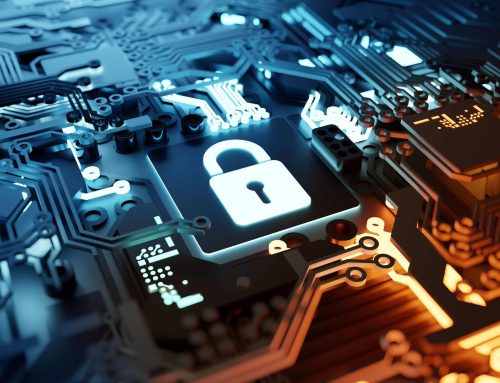With today’s rapid technological advancements in surveillance, businesses, government facilities, and individuals face a large risk of unauthorized surveillance. Surveillance devices have become increasingly compact, intelligent, and precise, which enables their deployment without detection. This poses a large threat to privacy and the potential for data leaks.
Luckily, there are many counter surveillance methods that businesses and government facilities, such as SCIFS, can implement to prevent spying individuals from gaining access to sensitive and private data. By employing simple yet effective strategies, businesses can proactively defend against unauthorized surveillance, making sure the privacy and security of your personal information and business operations are protected.

What is Counter Surveillance?
To understand how to protect your business from unwanted surveillance, it’s important to know what counter surveillance entails. Counter surveillance refers to a set of techniques and practices employed to detect, prevent, and mitigate unwanted surveillance activities.
Businesses need to first identify surveillance threats and then create a plan of action to implement counter surveillance methods. These methods could include physical inspections for cameras and listening devices or technical measures, such as securing commission channels and protecting data integrity. Counter surveillance actions can be as large as creating strong networks that hackers can’t crack or as small as being mindful of your digital footprint.
By adopting counter surveillance measures, businesses and individuals can help protect their privacy while detecting and counteracting surveillance attempts, therefore reducing their risk.
Understanding the Need for Counter Surveillance
Counter surveillance is needed not only for highly-secured areas of government or other organizations, but also for other forms of businesses. In order to keep operations, assets, and other sensitive information from prying eyes, it’s important to utilize counter surveillance techniques.
For example, a company that is working on their latest version of a product would want to keep the details of that product from leaking before the release. Without the proper counter surveillance a visitor or unchecked employee could easily gain access to that information and leak it to the public.
Other reasons a company or organization would need counter surveillance are:
- Protecting trade secrets
- Safeguarding confidentiality, such as client data and financial records
- Maintaining business continuity
- Preventing corporate espionage
- Compliance with privacy regulations
- Fighting insider threats
How to Identify Potential Threats and Risks
Before utilizing any counter surveillance tools in an organization, owners must first identify the risks and threats their business faces using a systematic approach.
Risk Assessment
Identify areas and assets that are more likely to be targeted or that are at a higher risk of being stolen. For example, a medical facility will not only need physical security to protect patients, but a strong network security to prevent their patient data from being leaked.
Security Audit
Perform regular security audits to assess existing security measures. This will help to identify any gaps or weaknesses, including physical and technological. During this audit, spend time reviewing policies with employees, as well as any other procedures that may need to be improved upon.
Technology Assessment
Digital data leaks are more common than ever and are getting easier to do. It’s important to evaluate the technology systems that are in place, including assessing network security, access controls, monitoring systems, and more.
By taking the time to find any vulnerabilities in their system, businesses can prioritize their efforts and implement the appropriate measure to address the risks effectively.

Counter Surveillance Strategies
Once weaknesses are identified, counter surveillance methods can begin to be put into place to protect sensitive information. There are multiple types of counter surveillance—no one type is more effective than another, and it’s important to utilize each one in order to get a fully secured facility.
1. Physical Security Measures
The easiest way to protect your business from spies is through physical security measures that can help deter or detect surveillance attempts. This could include cameras, access controls, alarm systems, and security personnel. Cell phone lockers are just one example of physical security measures that can be used. They can be placed in areas to prevent employees or visitors from using their phones to leak images or other information.
2. Technical Surveillance Countermeasures (TSCM)
Technical surveillance countermeasures, or TSCM, involve the use of specialized equipment to detect electronic surveillance devices. TSCM uses both physical sweeps of an area and electronic sweeps to ensure that there are any bugs or other surveillance devices, including wiretaps. Advanced electronic countermeasure equipment is used to detect GPS trackers, hidden cameras, and other electronic surveillance devices.
3. Digital Privacy and Data Protection
Privacy is a crucial part of today’s electronic world, where it’s increasingly harder to keep personal and sensitive information from nefarious people. To combat this, businesses can implement encryption technologies and implement firewalls to help safeguard data from access. Having regular software updates, strong passwords, and employee cybersecurity education can also help mitigate the risks.
4. Surveillance Detection Systems
Having a quick response to a threat is an important aspect of counter surveillance. In order to be able to respond quickly, a surveillance detection system can help. These systems allow businesses to identify and alert them to potential surveillance activities, including unwanted cell phones. Advanced monitoring software can help detect unusual behavior and alert security personnel to respond in a timely manner.
5. Counterintelligence Measures
To protect private information, companies can use counterintelligence measures such as conducting background checks, monitoring online activity, and sharing intelligence information with trusted authorities. These small steps can help to neutralize surveillance threats and create a safer environment.
The Power of Counter Surveillance
By understanding what counter surveillance entails and identifying the potential threats, businesses can take proactive measures to mitigate surveillance risks. This includes tasks such as implementing physics security measures, as well well as utilizing technical surveillance countermeasures to detect electronic devices. CellBuster’s Zone Protector, is one way to detect unwanted cell phones from entering facilities, allowing private data and information from being leaked. Click here to learn more about our Zone Protector.






